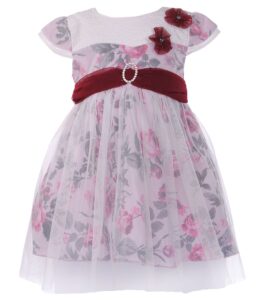
Girls

grown
Fabrication : Jorjet with 100% cotton Inner
west belt with cool design
Dry wash
Step into sophistication and grace with our exclusive collection of woven gowns. These meticulously crafted gowns exude timeless beauty and modern elegance, perfect for those seeking refined style and comfort.
Exceptional Woven Design:
Our woven gowns are crafted from high-quality materials, intricately woven to create exquisite patterns and textures. The detailed craftsmanship ensures each gown is a statement of elegance and sophistication.
http://www.stylexclothingbd.com
Versatile Elegance:
From formal events to casual gatherings, our woven grown are a versatile choice. The intricate woven patterns and flowing designs elevate your style, providing a touch of effortless glamour for every occasion.
Comfort in Style:
Designed for both comfort and style, our grown feature a perfect balance of grace and ease. The soft, breathable woven fabric drapes beautifully, offering not just a stunning look but also a comfortable feel throughout the day or evening.
Elevate Your Presence:
Make a lasting impression with our woven grown , designed to empower and enchant. Embrace the allure of timeless style, capturing attention and admiration wherever you go.
Conclusion:
Explore the epitome of elegance and comfort with our range of woven grown. Discover the perfect gown for your distinctive style, designed to grace any event or gathering with unparalleled sophistication.

The manufacturing process for gowns can vary depending on the specific design, materials, and production methods. Here is an overview of the general manufacturing procedure for a girls’ gown:
Specifically for girls’ gowns, the process might involve additional considerations for safety, comfort, and age-appropriate design. The process can also vary based on whether it’s a handmade, bespoke gown or produced in a factory setting.
When it comes to making gowns, the choice of fabric depends on the style, design, and purpose of the gown. Various fabrics are used for different types of gowns, offering different characteristics such as drape, texture, and structure. Some common fabrics used for making gowns include:
The choice of fabric depends on the desired aesthetic, the season, the type of event the gown is intended for, and the overall design of the dress. Each fabric offers its own unique characteristics and contributes to the overall look and feel of the gown.
https://stylexclothingbd.com/babys-wear/
This excerpt aims to highlight the elegance, versatility, comfort, and sophistication of woven grown, presenting them as a versatile choice for various occasions. Adjustments can be made based on specific features or attributes of the grown.
ACCOUNT NAME: STYLEX CLOTHING & BUYING HOUSE LTD
A/C No: 40081110001064
Swift: 190264635

Tel: +8809638343007
Call: +88 01911885436
Email: info@stylexclothingbd.com